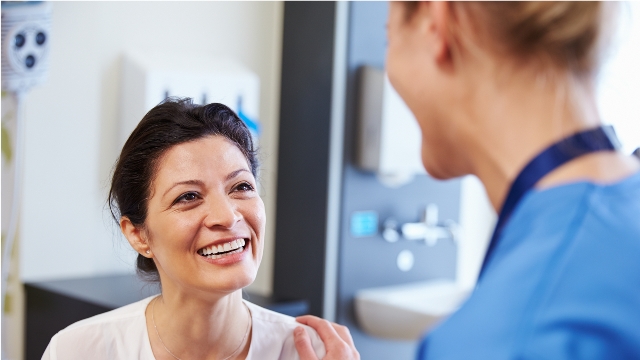
Centers of Excellence

Colposcopy is a painless, cervical examination.
Colposcopy is a specific, painless, cervical examination that occurs when the smear test or Pap test, (liquid-based cytology, thin prep or traditional cytology) shows alterations or when molecular tests DNA or m-RNA identifying high risk HPV strains in the prevention of cervical cancer are positive, as well as women’s follow-up after regular treatments (LLETZ, Cryotherapy).
Colposcopy is done as a simple gynecological examination using a magnifying lens that provides the colposcope, which does not touch the woman. The test lasts 5-10 minutes and is painless and bloodless. A vaginal speculum is placed in the vagina and reveal the uterine cervix. The doctor positions the special magnifying instrument, called a colposcope, a few inches away from the vulva. A bright light is shined into the vagina, and the doctor looks through the lens, as if using binoculars. The cervix and vagina are swabbed with cotton to clear away any mucus. The doctor may apply a solution of vinegar or another type of solution to the area. This may cause a burning or tingling sensation. The solution helps highlight any areas of suspicious cells.
Most women do not find it painful.
It follows a solution of iodine – Lugol, where the normal areas of the cervix are depicted as dark colored. If the doctor finds a suspicious area, a small sample of tissue may be collected for laboratory testing. To collect the tissue, the doctor uses a sharp biopsy instrument to remove a small piece of tissue. If there are multiple suspicious areas, the doctor may take multiple biopsy samples.
What the woman feels during a biopsy depends on what type of tissue is being removed: A cervical biopsy will cause mild discomfort but is usually not painful; the fee woman feels some pressure or cramping. A biopsy of the lower portion of the vagina or the vulva can cause pain, so the doctor may administer a local anesthetic to numb the area. A brownish-yellow (Monsel) hemostatic solution may be inserted after the biopsy. After taking a biopsy it is advisable to avoid contact and the use of tampons or intravaginal creams for 48 hours after the procedure. Colposcopy can be done at any stage of the cycle unless there is intense vaginal bleeding, so it usually has to be postponed.
A vaginal cream should be avoided before colposcopy.
Colposcopy is a safe test during pregnancy.